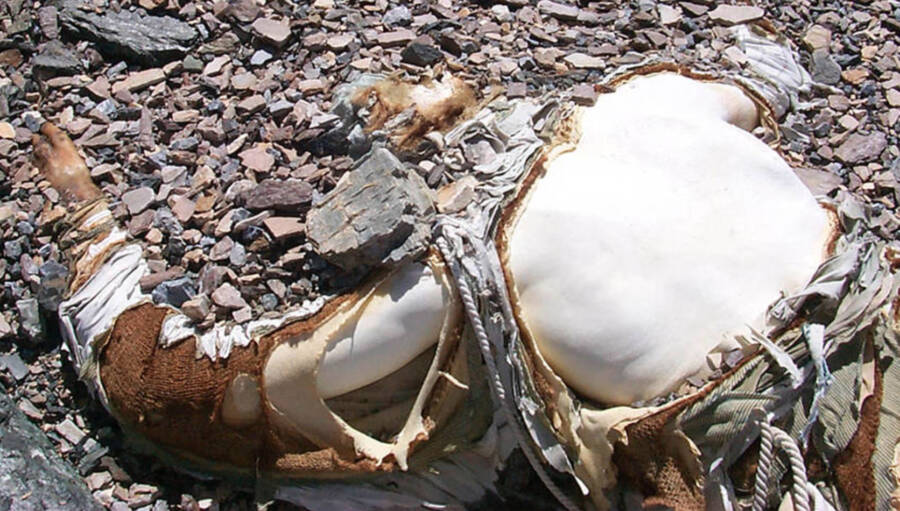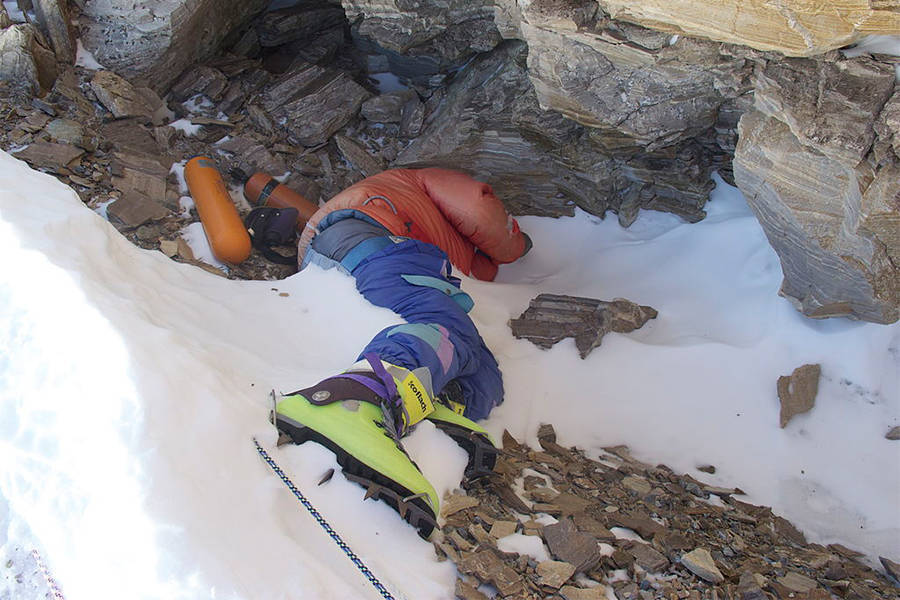Untold Stories: The Grim Reality Of Mount Everest Deaths
Is Everest truly the ultimate test of human endurance, or a haunting monument to ambition's fatal price? The frozen slopes of Mount Everest, the worlds tallest mountain at 8,848.86 meters (29,031.7 feet), have become an unintended graveyard, with over 200 bodies remaining on the mountain, serving as grim reminders of the perils faced by those who dare to challenge its heights.
Since the 1920s, more than 330 climbers have perished on Everest, their dreams of conquering the summit turning into tragic ends. The mountain, located between Nepal and Tibet, presents a multitude of challenges, from extreme cold and sparse oxygen to unpredictable weather and treacherous terrain. Many climbers have died attempting to get past Mount Everest's unforgiving final hurdle, their bodies now a permanent part of the landscape. The sheer logistical complexities involved in retrieving these bodies mean that most remain where they fell, preserved by the frigid temperatures. It is highly inefficient, impractical, and dangerous to move frozen bodies, which can weigh over 300 pounds (136 kg). At these altitudes and under such conditions, the risks to recovery teams are simply too great.
| Topic | Information |
|---|---|
| Location | Mount Everest, border of Nepal and Tibet |
| Height | 8,848.86 meters (29,031.7 feet) |
| Total Deaths | Over 330 since the 1920s |
| Estimated Bodies Remaining | Approximately 200 |
| Main Reasons for Unrecovered Bodies | Logistical complexities, dangerous conditions, extreme cold preserving the bodies |
| "Green Boots" | Name given to the body of a climber in a limestone alcove cave on the northeastern route |
| Rainbow Valley | Area on Everest named for the brightly colored jackets of deceased climbers |
| Annual Visitors to Sagarmatha National Park | Approximately 100,000 |
| Summit Attempts per Year | Approximately 800 |
| Reference | National Geographic |
One of the most well-known examples is Green Boots, the moniker given to the body of a climber who sought shelter in a limestone alcove cave along the northeastern route. For years, "Green Boots" served as a grim landmark for climbers ascending from the north side. The term became common parlance as expeditions regularly encountered the body curled up in the cave. It remains unknown exactly when the term "Green Boots" entered Everest vocabulary. This climber, like many others, became a permanent fixture on the mountain, a silent testament to the risks undertaken by those who pursue the ultimate climb.
The area known as "Rainbow Valley" is another stark reminder of the mountain's dangers. This euphemistic name refers to the section of Everest littered with the brightly colored jackets of those who have lost their lives. These bodies, often remarkably preserved by the cold, serve as both a warning and a guidepost for other climbers. Hannelore Schmatz, the first woman and the first German national to die on Everest, became one such frozen warning sign, her body remaining visible for years as a chilling reminder of the mountain's power.
The preservation of bodies on Mount Everest is due to the extremely cold conditions, sparse oxygen, and limited microbial activity. These factors significantly slow down the decay of organic matter, leaving the deceased remarkably intact. This preservation, while scientifically interesting, adds another layer of complexity to the ethical considerations surrounding the unrecovered bodies. The mountain becomes a macabre museum, displaying the consequences of ambition and the harsh realities of high-altitude mountaineering.
While the presence of these bodies can serve as a visual deterrent, the increasing number of climbers attempting to summit Everest raises concerns about tourism and its impact on the mountain's environment. The Sagarmatha National Park, which encompasses Everest, sees approximately 100,000 visitors each year, with around 800 attempting to reach the summit. This influx of people contributes to the accumulation of trash and other environmental hazards, further complicating the already challenging task of managing the mountain's resources. Nepal has undertaken efforts to remove trash and dead bodies from Everest, but the scale of the problem is immense.
Tragedies such as the 1996 Mount Everest disaster, in which Tsewang was a part of, highlight the unpredictable nature of the mountain. While not the deadliest single disaster on Everest (that distinction belongs to the 2014 avalanche in the Khumbu Icefall, which killed 16 local Sherpas), the 1996 event brought global attention to the inherent dangers of climbing at such extreme altitudes. Bad weather conditions on May 11, 2009, forced three Nepalese Sherpa brothers to halt their ascent, underscoring the mountain's unforgiving nature.
Efforts to retrieve bodies from Everest are fraught with risk. In 2007, an expedition was carried out to move the body of Francys Arsentiev, an American climber who died on Everest in 1998. Her body had been visible for nearly a decade, serving as a haunting reminder of the mountain's dangers. The expedition took the difficult step of dropping her body into the mountain, out of sight, a poignant example of the lengths to which climbers will go to honor the fallen. In May 2017, rescuers retrieved the bodies of three Indian climbers who died on Everest, transporting them back to Kathmandu, Nepal, a testament to the ongoing efforts to bring closure to grieving families.
Despite the risks and the ethical dilemmas, Mount Everest continues to draw climbers from around the world, each seeking to test their limits against the ultimate challenge. The mountain, with its breathtaking beauty and unforgiving conditions, remains a symbol of extreme human endurance and the sometimes fatal consequences of ambition. The 200 bodies that remain on its slopes serve as a constant reminder of the price that some have paid in pursuit of their dreams. Over 340 people have died attempting to reach\u2014or return from\u2014the summit of Mount Everest which, at 8,848.86 m (29,031 ft 8 + 1 \u2044 2 in), is earth's highest mountain and a particularly desirable peak for mountaineers. This makes it the mountain with the most deaths, although it does not have the highest death rate.
The Mount Everest Base Camp, at 17,598 feet high, hosts climbers acclimating to the elevation before they make their ascent. This preparatory stage is crucial, yet even at base camp, the altitude poses significant challenges. For those who eventually push on to the summit, the risks are amplified exponentially. The body of climber David Sharp, for instance, was left where he died, becoming another tragic marker on the mountain. Mount everest bodies like these have indeed served as guideposts for other climbers for years.
Climbing Mount Fuji, as one recounted, offers a chilling perspective. "My family climbed Mt. Fuji when I was 15 and we all agreed that if hell does exist, it's climbing that damn mountain over and over again for all of eternity. I barely remember reaching the top because I passed out the second I reached the top. Going down was fun though." This sentiment, though specific to Fuji, resonates with the broader challenges of high-altitude mountaineering. The descent, often underestimated, can be just as perilous as the ascent.
In conclusion, the story of bodies on Mount Everest is a complex tapestry woven with threads of ambition, tragedy, logistical challenges, and ethical considerations. It's a reminder of the raw power of nature and the enduring allure of the world's highest peak. The mountain remains a formidable challenge, and its frozen slopes continue to hold the stories of those who dared to test their limits against its unforgiving heights. Narayan Maharjan\/NurPhoto\/Getty Images capture the essence of these realities, reminding us of the human element within this extreme environment.
- Why People Celebrating Matters News Photos More
- Penny Downie The Aussie Actress Dominating Uk Stage Screen

The Bodies Of Dead Climbers On Mount Everest Are Serving As Guideposts

9 Mount Everest Deaths And The Harrowing Stories Behind Them

Mount Everest Bodies